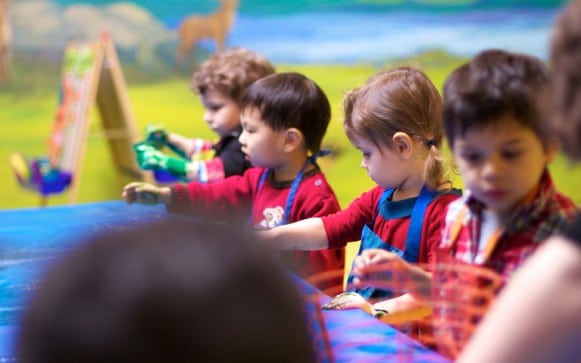Separation anxiety is a common challenge for both children and parents, especially during significant transitions like starting school or attending new classes. Understanding and addressing this anxiety can foster secure attachment and positive experiences. Here’s an expanded guide to help manage anxiety and encourage healthy separation.
What Is Attachment Theory
Attachment Theory explains the emotional bond between an infant and their primary caregiver. This bond is crucial for the child’s development and sense of security. Even though caregivers and infants are often out of sync, how they repair mismatches matters. These moments teach children to cope with stress and develop self-soothing skills.
Since before birth, your child has relied on you to take care of their every need. After birth, you anticipate their needs and learn to understand their cries. Surprisingly, studies show that infants and caregivers are out of sync 70% of the time. However, repairing these mismatches creates a secure attachment; teaching your child essential coping mechanisms, making a few mistakes, and letting them figure things out on their fosters a healthy internal working model of the world and themselves.
Create A Strong Foundation For Children
1. Build Trust
Your child trusts you to meet their needs. Your positive and calm demeanor is essential when transferring this trust to a teacher. Children are adept at reading emotions, so staying positive and encouraging is vital. Think of school drop-offs as a “visual cliff experiment,” where your child will feel secure to explore if you display happy and encouraging emotions.
2. Acknowledge Feelings
Recognize and validate your child’s feelings. For example, saying, “It’s okay to feel sad, but you are brave and will have fun,” helps them understand their emotions while feeling supported. Combine this acknowledgment with shifting focus to a new activity, such as, “I know you’re feeling sad, but did you see the fun art project we have today?”
Techniques To Manage Toddler Separation Anxiety
1. Establish a Routine
Consistency helps children feel secure. Set up a predictable daily routine at home and practice elements of their school day. Familiarity reduces anxiety related to change. Creating distinct areas for different activities and maintaining a predictable order of events in the classroom helps children feel more confident and less anxious.
2. Stay Positive
Your attitude greatly influences your child’s experience. Keep a calm and positive demeanor during drop-off and when discussing school. Highlight the fun and exciting aspects of their day. For example, you can say, “See how brave you were today! You helped clean up those toys all by yourself.”
Additional Read: Ideas For Family Fun During the Holidays
3. Be Patient
Separation is a gradual process. Some children adapt quickly, while others take longer. Allow your child the time they need and be patient with their progress. Remember that enrolling your child in a gentle separation program, you’re already helping them take steps toward independence, social growth, and greater confidence.
4. Trust Your Gut
You know your child best. Trust your instincts and remain confident in your choices regarding their care and education. Your confidence will reassure your child. You’ve prepared your child with coping skills and laid out a routine, so now it’s time to step back and let the separation process begin.
5. Communicate Openly
Explain the separation process honestly. Avoid surprises or trickery. Reassure your child that it’s okay to feel anxious and emphasize that they are capable and brave. For example, “It’s okay to feel sad or worried, but you are such a big, brave kid who is so good at making new friends.”
Practical Tips For A Smooth Drop-Off
Give Space
Encourage independence by letting your child explore their environment. The more they explore independently, the more comfortable they will be in the classroom.
Stay Calm
Your calmness will help soothe your child’s nerves. Do your best to be upbeat and relaxed during drop-off and when discussing the process.
Introduce the Teacher
Familiarize your child with their teacher’s name and face to build trust. Use this information to reassure your child: “Miss Brittny is here to care for you just like I do at home.”
Avoid Sneaking Away
Always say goodbye to foster trust. Never sneak out, as this can break the trust and increase anxiety.
Coping Strategies for Preschoolers’ Tough Days
Transitional Objects
Allow your child to bring a favorite toy or object for comfort. This object can serve as a tangible reminder of home and security.
Deep Breathing
Teach calming techniques like deep breaths or silly songs. These tools can help your child manage their anxiety and feel more in control.
Reassure
Remind your child that you will always come back and that they are strong and brave. Emphasize that separation is temporary and that grownups always return.
Communicate with Teachers
Share your child’s likes and interests with their teacher so they can engage your child in high-interest activities.
Additional Read: Spatial Awareness Activities for Smooth Moving
Consistency
Maintain a consistent schedule for drop-offs and pick-ups. Familiarity and routine help children feel more secure.
Additional Read: Get Practical Tips for Helping Your Child Adjust to Preschool with Ease
Final Thoughts
Remember, this process is about fostering independence and confidence in your child. By implementing these gentle separation techniques, you’re helping your child develop important life skills and preparing them for future successes in school and beyond.
Each child’s journey is unique, so be patient and celebrate the small victories. You and your child will successfully navigate this critical milestone with time, support, and practice. The goal is to give your child the freedom and confidence to engage in new experiences independently, knowing they have a secure base to return to.
Join us at Bubbles Academy to support your child’s journey towards independence. Our gentle separation classes are designed to make the process smoother and more rewarding. Visit our website or contact us today to learn more about our programs.

